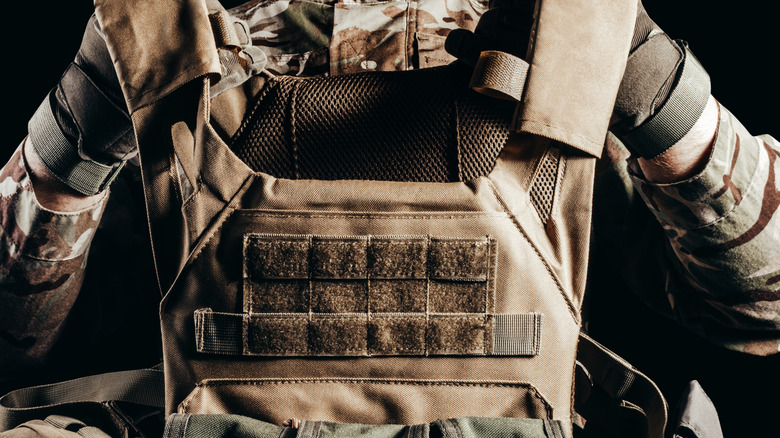Why The U.S. Military Scrapped Its Real-Life Iron Man Suit
Since Marvel Comics introduced the world to the wonders of Tony Stark's red-and-gold-clad alter ego in the 1960s, superhero fans have lusted after an Iron Man suit. But they aren't the only ones — about a decade ago, the U.S. military also found itself wanting to armor its special forces troops with the ultimate supersuit.
Thus, in 2013, the idea of the Tactical Assault Light Operators Suit (TALOS) was born. A joint acquisition task force was formed to research and develop the suit for Special Operations Command (SOCOM). The bodywear was intended to be designed around an exoskeleton to elevate special operator performance in-theater. In an attempt to field the technology quickly, the task force held a "rapid prototyping event" in 2014 that turned out over 200 parts and designs.
However, despite the gung-ho nature of the pursuit, the TALOS Iron Man suit never made it across the finish line. In fact, after a few years and some serious hype, the suit was scrapped, and it now remains just a piece of science fiction. Here's why.
The TALOS suit's history
The suit "was chartered to explore and catalyze a revolutionary integration of advanced technology to provide comprehensive ballistic protection, peerless tactical capabilities, and ultimately to enhance the strategic effectiveness of the SOF operator of the future," then-Army Gen. Joseph L. Votel, SOCOM's commander, said in 2015.
It was expected to be ready by 2018. The suit's structure was designed primarily around an exoskeleton intended to help take the weight of gear off troops wearing it. Additionally, various military offices worked to infuse the suit with the latest and greatest tools, including high-tech armor and a health monitoring system, in addition to the load-bearing capability.
"We are really looking at stretching the bounds of science and technology," said Michael Fieldson, the SOCOM TALOS project manager. However, despite major investments in time, research, and testing, by 2019, the TALOS suit and the U.S. military's dream of turning troops into Iron Man was dead.
How the Iron Man suit died
The suit proved to be more science fiction than applicable in the real world. Despite the exciting renderings, what defense officials envisioned never really made it off the page in a cohesive manner.
One of the biggest issues was the amount of energy needed to power all the suit's components. A report by the Center for New American Security published in October 2018 said, "The current state of technology still does not have sufficient power to manage the intense load-carrying capacity that the SOCOM TALOS suit concept requires, covering a user in hard armor, for extended dismounted infantry operations. Further research and development is needed before full-body exoskeletons will be feasible for infantry combat away from a reliable power source." The exoskeleton ultimately proved impossible to design to the intended SOCOM specifications because of the amount of interoperability needed between it and all the other necessary components in the suit for it to work.
Ultimately, the suit was scrapped in 2019. However, the pieces of technology developed for the TALOS suit weren't all babies tossed out with the bathwater. The armor advancements and monitoring systems that SOCOM explored continue to prove useful areas of study for future combat attire. For example, Lockheed Martin continued with exoskeleton testing alongside the Army. And the polyethylene armor is also certainly of value, too.

